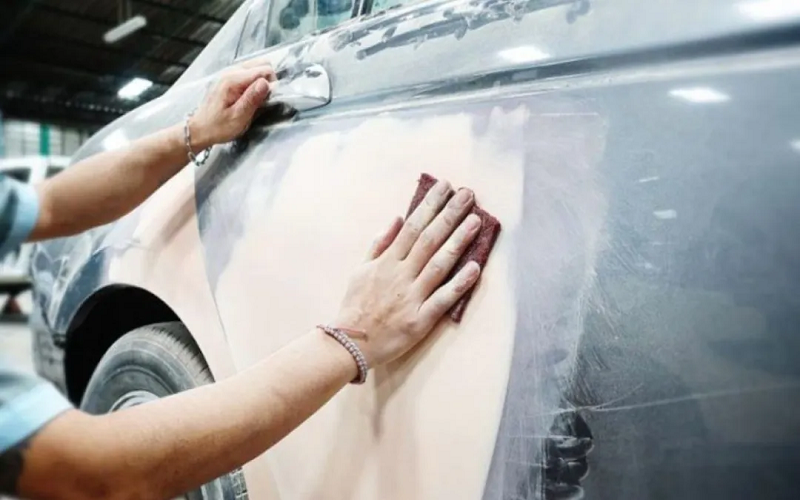Imagine you’ve just pulled out of Body Shop Austin, you’re cruising down a bustling high street in a sleek, modern car, enjoying that power steering and all the latest software perks. But that moment you hear the rumbles of a classic turning the corner, everyone’s head turns to look. Ever wondered how car body designs evolved to become the stylish, aerodynamic marvels they are today? Whether you’re a fan of the modern look or not! From the boxy, utilitarian shapes of the early 20th century to the curvaceous, tech-savvy designs of the present, car body design has undergone a fascinating transformation.
You might be surprised to learn that every curve, line and material choice in car design reflects a blend of engineering innovation, cultural shifts and technological advancements. As we delve into the evolution of car body design, you’ll discover how these factors have shaped the vehicles we drive and admire today. Whether you’re a car enthusiast or just curious about design trends, this journey through automotive history promises to be both enlightening and engaging.
Evolution of Car Body Design: A Historical Overview
Origins of Car Design
Picture this — the late 19th century brings forth the ‘horseless carriage’. Early cars, like Benz’s Patent-Motorwagen in 1886, mirrored the appearance of horse-drawn buggies, but were crafted primarily from wood and metal, prioritising functionality over form. The aesthetic similarity to carriages continues until the early 20th century, when automotive design slowly begins its own unique journey.
Milestones in Early 20th Century
Henry Ford revs things up by 1908 with the Model T. It’s simple, sturdy, and built for efficiency. As the car rapidly evolves, aesthetics take centre stage. For example, the 1934 Chrysler Airflow introduces aerodynamics with curves and a sleek outline. By the 1940s, design blends beauty and functionality. The Cadillac Series 62, adorned with tailfins, exemplifies this balance.
Impact of Technological Advancements
Car body design has transformed dramatically, thanks to rapid technological advancements. Let’s delve into how these advancements have shaped the materials, manufacturing techniques, and the pursuit of aerodynamics and efficiency.
Materials and Manufacturing Techniques
Innovations in materials and manufacturing have redefined car body designs. Early cars relied on heavy steel and wooden frameworks, making them less efficient. Enter aluminium and carbon fibre – materials that are lightweight yet strong. These modern materials make cars quicker, more fuel-efficient, and, let’s be honest, a whole lot swankier. Remember the Tesla Model S with its sleek, futuristic look? That’s the magic of advanced materials. Manufacturing techniques like 3D printing and robotic assembly lines have also revolutionised production, enabling precise, intricate designs that were once deemed impossible.
Aerodynamics and Efficiency
Aerodynamics isn’t just a buzzword; it’s a game-changer for car efficiency. Early designs were boxy and battled against wind. Picture driving a brick through the air – not fun. Designers now sculpt car bodies with sleek curves and smooth lines, minimising drag. The result? Better fuel efficiency and faster speeds. A prime example is the Toyota Prius, engineered for minimal air resistance, which helps it achieve impressive fuel economy. Computer-aided design (CAD) and wind tunnel testing refine these aerodynamic profiles, ensuring vehicles not only look good but perform superbly on the road. The future of car design leans heavily on these principles, constantly striving for that perfect blend of form and function.
Iconic Car Designs Through the Decades
Car body design has transformed remarkably over the decades, each era bringing unique aesthetics and innovations. Let’s travel through time by exploring some iconic designs.
Post-War Design Innovation
After World War II, the automotive industry saw a burst of creativity, blending style with newfound technological prowess. Cars like the 1949 Cadillac Series 62 Coupe introduced tailfins, symbolising optimism and progress. You probably remember seeing these sleek, curved beauties roaring down old movie screens. The Volkswagen Beetle, another post-war icon, became a symbol of practicality and charm, with its distinctive rounded shape and durable build. The Beetle’s design stood out for its simplicity and functionality, capturing hearts worldwide.
Modern Era and Future Trends
In the modern era, car designs prioritise aerodynamics and sustainability. The 1990s brought us streamlined masterpieces like the Audi TT with its smooth lines and striking silhouette. Today, electric cars are stealing the show. Take the Tesla Model S, for example, where cutting-edge tech meets sleek elegance. It’s almost like driving the future itself. Looking ahead, concepts like autonomous vehicles and smart materials promise even more futuristic designs. How exciting is it to imagine cars that are not only smart but also eco-friendly and aesthetically stunning?
Keep pondering: What might the next evolution in car design look like?
The Role of Regulation and Safety
Regulation and safety have always steered the car design industry. Without these guiding stars, we might still be driving metal deathtraps.
Global Safety Standards
Global safety standards have reshaped car body design. Since the 1968 compulsory seatbelt law in the United States, many countries followed suit, ensuring every car has seatbelts, airbags, and crumple zones. Europe, in 1998, introduced the Euro NCAP tests, pushing manufacturers to design safer cars. These tests affected elements like bumpers and side-impact bars. Ever noticed how cars today look bulkier? That’s safety standards at work.
Environmental Policies
Environmental policies have forced car makers to rethink their designs. By the mid-1990s, the push for reduced emissions led to aerodynamic shapes, lighter materials, and electric engines. The Kyoto Protocol of 1997 nudged global automakers to innovate greener designs. Have you seen the sleek lines of the Toyota Prius? You can thank environmental regulations for that. Electrification trends have also sparked smart design solutions, merging aesthetics and efficiency. Take a moment to think about the last time you admired a car. Did safety or environmental factors ever cross your mind? Possibly not, but they shaped what you saw.
Parting Thoughts
Car body design has come a long way since the late 19th century. Technological advancements and innovative materials have continually pushed the boundaries of what’s possible. Iconic designs from different eras have left a lasting impact, while modern trends focus on aerodynamics and sustainability.
Regulations and safety standards have significantly influenced car designs, leading to safer and more environmentally friendly vehicles. These changes often go unnoticed but have a profound effect on the cars we drive today. As the industry continues to evolve, you can expect even more exciting developments in car body design.



